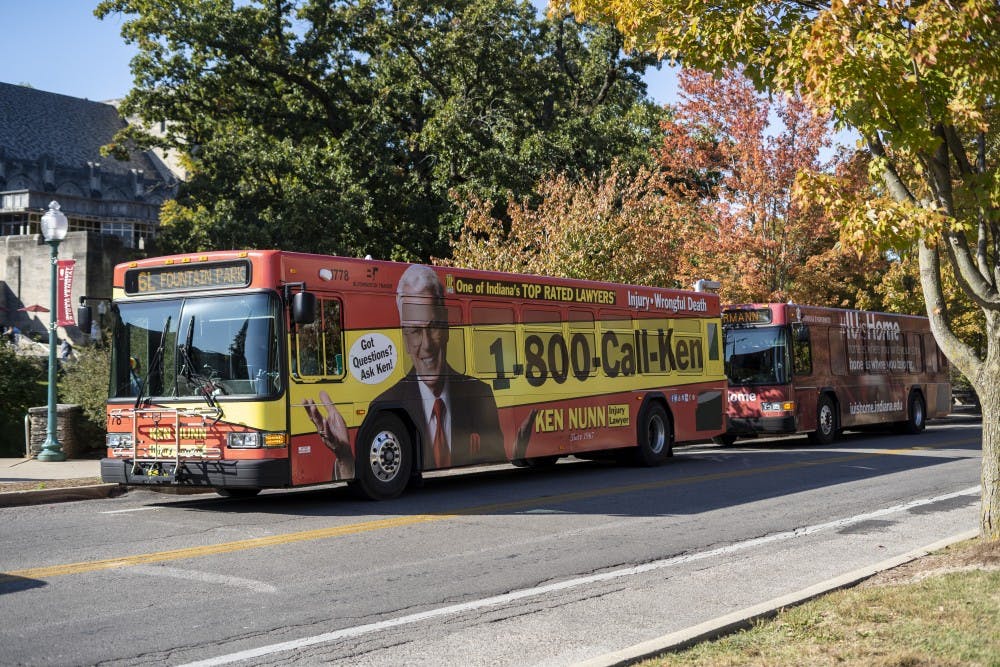New and improved Bloomington Transit bus routes will go into effect in time for the fall 2020.
Zac Huneck, Bloomington Transit planning and special projects manager, said ridership was at its peak in 2014, and since then, it has been declining. He said this is a national trend in public transportation.
In fall 2018, a transportation planning firm began studying Bloomington Transit ridership and transit potential, which takes into account population density, jobs in the area and households without a car. The study ended in June, and Bloomington Transit is on its third scenario for improved routes.
The project combines similar routes, such as the 1S and the 7, and reworks others such as the 4W to make them more direct.
“We are looking to create some efficiencies in the system,” Huneck said.
He said ridership may be down because of low gas prices, ride sharing services such as Uber and Lyft and changes in Bloomington’s landscape.
Huneck said in order to compete with these conditions, public transit needs to be convenient and speedy. Some of the current routes are strained for time, he said.
Allen Langley has been a bus driver for Bloomington Transit since 2016. He usually drives a 9 Route bus in the afternoons and evenings, but he’s driven all the routes before. Langley said he thinks it’s a good idea to rework the routes, largely because it’s difficult for bus drivers to stay on-schedule.
“If they don’t add time to these routes, we’re going to be hurting,” he said. “Some routes got way too much time on them, others don’t got near enough.”
Langley was driving the 9 bus Tuesday evening on 10th Street, and he didn’t pick anyone up at the Herman B Wells Library stop.
“I only got x amount of time to get back down there, and if I stop every time, I’m going to be way, way off-schedule,” Langley said. “I’m going to have to drive three or four trips to get caught back up.”
Langley said this is common among bus drivers when they need to get back on-time, especially during rush hour from 4:30-7:30 p.m.
“That’s what we do all the time out here,” he said.
Huneck said Bloomington Transit is also updating the routes. The current routes are from two or three decades ago, he said.
Lew May, Bloomington Transit general manager, said Bloomington has changed significantly within the last 15 years or so. He mentioned the I-69 highway and an increase in residential development in the downtown area.
“It’s time for us to consider a major redesign,” May said.
Huneck said the project should address areas that are difficult for bus drivers to navigate through. Langley said some stops should be eliminated because of that difficulty.
“There ain’t no curves in this town, nobody lets you out, and when you do come out, you got people cursing at you,” he said.
Langley said exiting the 9 Route bus stop at East Bay Apartments on Eastgate Lane is hard, and he said the stops that take the east side 3 Route off Third Street are a hassle.
“It’s a major, major mess,” he said.
Huneck said this project should increase ridership, but it’s not always about just the number of people served. Bloomington Transit also needs to ensure it serves as much of the city as possible, especially underserved populations such as poor people or people with disabilities.
“Every time you move a route, you’re effectively taking transit service away from one part of town, one street, a few bus stops, a group of people, and you’re giving it to somebody else,” he said. “Finding the right balance in there is not easy.”
May and Huneck said they need to understand how the project affects people Bloomington Transit serves before board members make a decision on the modified bus route system in January 2020.
Bloomington Transit will have public input sessions, both informal and informal, to discuss the changes. The next informal session will be 11 a.m. to 1:30 p.m. Oct. 25 at the Downtown Transit Center lobby and the next formal one will be 6-9 p.m. Oct. 29 at the center.
“We fully expect to make some changes based on feedback we get,” Huneck said.




